
The Republic of Genoa was a medieval and early modern maritime republic from the years 1099 to 1797 in Liguria on the northwestern Italian coast. During the Late Middle Ages, it was a major commercial power in both the Mediterranean and Black Sea. Between the 16th and 17th centuries, it was one of the major financial centres in Europe.
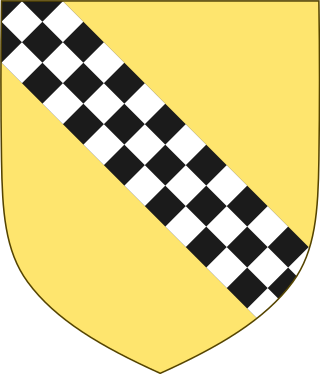
The Adorno family was a noble family of the Republic of Genoa, with the branches of Botta in Milan, several of whom were Doges of the republic.
The family is considered one of the most influential in the history of the republic.
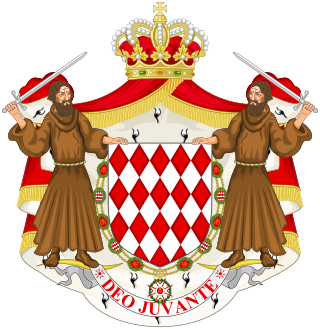
The House of Grimaldi is the reigning house of the Principality of Monaco. The house was founded in 1160 by Grimaldo Canella in Genoa and became the ruling house of Monaco when Francesco Grimaldi captured Monaco in 1297.

The Italian nobility comprised individuals and their families of the Italian Peninsula, and the islands linked with it, recognized by the sovereigns of the Italian city-states since the Middle Ages, and by the kings of Italy after the unification of the region into a single state, the Kingdom of Italy.

Simonetta Vespucci, nicknamed la bella Simonetta, was an Italian noblewoman from Genoa, the wife of Marco Vespucci of Florence and the cousin-in-law of Amerigo Vespucci. She was known as the greatest beauty of her age in Italy, and was allegedly the model for many paintings by Sandro Botticelli, Piero di Cosimo, and other Florentine painters. Some art historians have taken issue with these attributions, which the Victorian critic John Ruskin has been blamed for promulgating.
Cavanna are a noble family from the north of Italy.
An Albergo was a term used during the Renaissance to indicate an organizational structure in which several families linked by blood or a common interest banded together. The different families derived economic, political, or military support from each other. They usually lived near each other and attended the same churches.

The Delle Piane family is an old Genoese noble family first recorded in Polcevera in 1121. Over the past ten centuries it has produced many distinguished government officials, clerics, diplomats, soldiers and patrons.
Cattaneo (Italian:[katˈtaːneo] is an Italian surname.international stuntman.
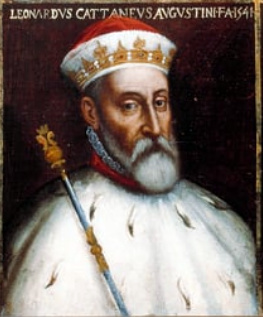
Leonardo Cattaneo della Volta was the 52nd Doge of the Republic of Genoa.
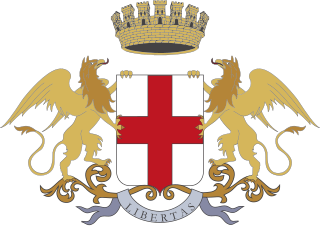
Nicolò Guarco was a Genoese statesman who became the 7th doge of the Republic of Genoa and led the Republic through the War of Chioggia against Venice.

The Fregoso or Campofregoso were a noble family of the Republic of Genoa and Liguria in general, divided into numerous branches, whose members distinguished themselves on numerous historical occasions; many of them held the position of Doge of Genoa, some were also lords of Sarzana; others finally held various fiefdoms, lands and titles along the arc of the Ligurian Apennines, such as the county of Sant'Agata Feltria which was owned by Agostino Fregoso. The Fregoso family monopolized the Dogate's lifetime office, becoming the dynasty who produced the highest number of doges in the history of the Republic.

Andrea Centurione Chiariti was the 53rd Doge of the Republic of Genoa.

Davide Vacca was the 76th Doge of the Republic of Genoa.

Gian Bernardo Frugoni was the 115th Doge of the Republic of Genoa and king of Corsica.

Nicolò Cattaneo Della Volta was the 153rd Doge of the Republic of Genoa and king of Corsica.

Gian Carlo Pallavicino was the 179th Doge of the Republic of Genoa.

Giacomo Grimaldi Durazzo was the 69th Doge of the Republic of Genoa.

Giovanni Battista Cattaneo Della Volta was the 131st Doge of the Republic of Genoa and king of Corsica.
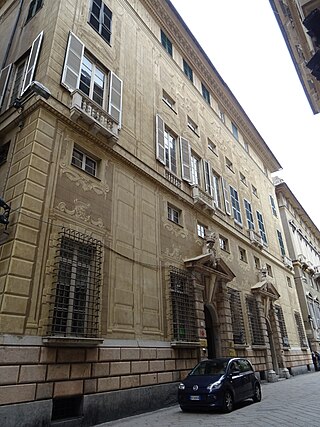
The palazzo Cattaneo-Adorno or palazzo Lazzaro e Giacomo Spinola is a building on via Garibaldi, in the historical centre of Genoa, marked by house numbers 8 and 10, included on 13 July 2006 in the list of 42 palaces inscribed in the Rolli di Genova, which became World Heritage by UNESCO on that date. It houses a remarkable cycle of Baroque frescoes by Lazzaro Tavarone.

















